Public Archive
A patchy record of DIY satellite imagery and weather notes since 2020. The open-weather public archive is open to everyone willing and able to contribute.
Words for Climate
An evolving set of words chosen by contributors to reflect their experiences of the climate crisis.
Filter by
Ground Station Type
Automatic Ground Stations are local, semi-permanent stations that record and upload satellite transmissions automatically once per day. Manual ground stations are DIY and often mobile; operators manually record and upload satellite transmissions.
Satellites
The archive contains Automatic Picture Transmissions (APT) by US weather satellites NOAA-15, NOAA-18 and NOAA-19.
Nowcasts
Collective earth-sensing events led by open-weather, co-produced by a network of contributors around the world.
Contributors
A list of tagged contributors only. Please contact us if you want to be added.
Automatic Ground Stations
Search
2025-05-20 22:11:47
Alan Robertson
Bathgate, West Lothian, UK
UK
NOAA-19
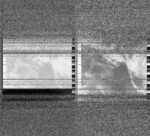
2025-05-20 22:13:00
Goownown Growers
The Seaweed Institute
CAST, Helston, Cornwall, United Kingdom
United Kingdom
NOAA-19

2025-05-20 23:10:00
Foto Colectania
Hangar
Ràdio Web MACBA
Barcelona, Spain
Spain
NOAA-19

2025-05-20 23:05:00
Maufox
Mauritius, Mauritius
Mauritius
NOAA-18

2025-05-20 19:19:26
Alan Robertson
Bathgate, West Lothian, UK
UK
NOAA-15
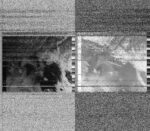
2025-05-20 10:28:00
Iterable pueyrredon
Cordoba , Argentina
Argentina
NOAA-19

2025-05-20 07:40:00
Iterable pueyrredon
Cordoba , Argentina
Argentina
NOAA-15

2025-05-20 08:18:00
Cyprus Amateur Radio Society
Nicosia , Cyprus
Cyprus
NOAA-15

2025-05-19 23:08:00
Iterable pueyrredon
Cordoba , Argentina
Argentina
NOAA-19

2025-05-19 23:20:00
jack hackerson
R9J9+C7F Dwingeloo, Netherlands, Europe
Europe
NOAA-18
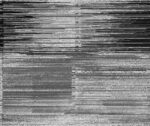
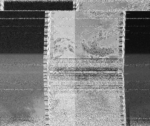
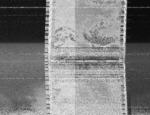
my first time doing this. i did my best and i might continue doing this for more pics ee
2025-05-19 22:24:30
Alan Robertson
Bathgate, West Lothian, UK
UK
NOAA-19
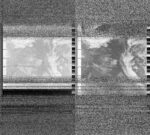
2025-05-19 19:45:34
Alan Robertson
Bathgate, West Lothian, UK
UK
NOAA-15
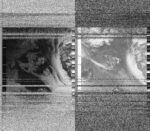
2025-05-19 23:18:00
Maufox
Mauritius, Mauritius
Mauritius
NOAA-18
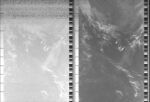
2025-05-19 19:46:00
Goownown Growers
The Seaweed Institute
CAST, Helston, Cornwall, United Kingdom
United Kingdom
NOAA-15

2025-05-19 11:24:00
Zack Wettstein
Seattle, United States
United States
NOAA-19

2025-05-19 12:43:00
Filip Shatlan and Diana Engelmann
Gainesville, Florida , United States
United States
NOAA-18
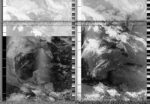
2025-05-19 10:41:00
Iterable pueyrredon
Cordoba , Argentina
Argentina
NOAA-19

2025-05-19 08:25:00
Heidi Neilson
Gilboa, New York, United States
United States
NOAA-15
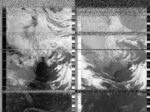
2025-05-19 12:27:41
Alan Robertson
Bathgate, West Lothian, UK
UK
NOAA-18
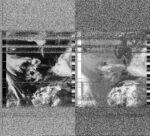
2025-05-19 11:16:00
Cyprus Amateur Radio Society
Nicosia , Cyprus
Cyprus
NOAA-19

2025-05-19 09:24:00
Foto Colectania
Hangar
Ràdio Web MACBA
Barcelona, Spain
Spain
NOAA-15

2025-05-18 20:52:00
Iterable pueyrredon
Cordoba , Argentina
Argentina
NOAA-15

2025-05-18 22:48:00
Cyprus Amateur Radio Society
Nicosia , Cyprus
Cyprus
NOAA-18

2025-05-18 23:31:00
Maufox
Mauritius, Mauritius
Mauritius
NOAA-18

2025-05-18 11:37:00
Zack Wettstein
Seattle, United States
United States
NOAA-19

2025-05-18 12:54:23
Derrick Yohn
N3TTI, United States
United States
NOAA-18


2025-05-18 11:03:11
Alan Robertson
Bathgate, West Lothian, UK
UK
NOAA-19
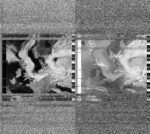
2025-05-18 11:14:00
Heidi Neilson
Gilboa, New York, United States
United States
NOAA-19
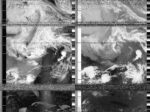
2025-05-18 08:44:11
Alan Robertson
Bathgate, West Lothian, UK
UK
NOAA-15
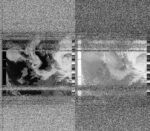
2025-05-18 08:55:00
Filip Shatlan and Diana Engelmann
Gainesville, Florida , United States
United States
NOAA-15
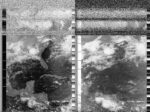
2025-05-18 12:44:00
Goownown Growers
The Seaweed Institute
CAST, Helston, Cornwall, United Kingdom
United Kingdom
NOAA-18

2025-05-18 12:09:00
Foto Colectania
Hangar
Ràdio Web MACBA
Barcelona, Spain
Spain
NOAA-19

2025-05-17 23:16:00
Zack Wettstein
Seattle, United States
United States
NOAA-18

2025-05-18 06:35:00
Oppressive Heat
Phnom Penh, Cambodia
Cambodia
NOAA-15

2025-05-17 23:45:00
Foto Colectania
Hangar
Ràdio Web MACBA
Barcelona, Spain
Spain
NOAA-18

2025-05-17 23:44:00
Maufox
Mauritius, Mauritius
Mauritius
NOAA-18

2025-05-17 22:05:00
Cosmos Astronomy Club MIT WPU
Pune, India
India
NOAA-19

2025-05-17 11:31:00
Filip Shatlan and Diana Engelmann
Gainesville, Florida , United States
United States
NOAA-19
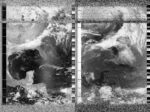
2025-05-17 11:26:00
Heidi Neilson
Gilboa, New York, United States
United States
NOAA-19
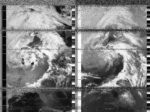
2025-05-17 09:14:00
Goownown Growers
The Seaweed Institute
CAST, Helston, Cornwall, United Kingdom
United Kingdom
NOAA-15

2025-05-15 21:56:49
Michele Boulogne
Sodankylä Geophysical Observatory, Finland
Finland
NOAA-19
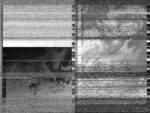
2025-05-15 18:32:00
Michele Boulogne
Sodankylä Geophysical Observatory, Finland
Finland
NOAA-15
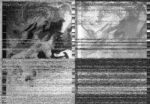
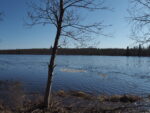
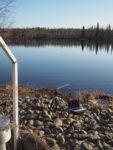
2025-05-16 23:03:00
Heidi Neilson
Gilboa, New York, United States
United States
NOAA-18
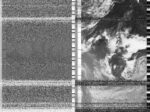
2025-05-16 19:48:00
Zack Wettstein
Seattle, United States
United States
NOAA-15

2025-05-16 22:46:00
Tsonami Arte Sonoro
Valparaiso, Chile
Chile
NOAA-19

2025-05-16 23:57:00
Maufox
Mauritius, Mauritius
Mauritius
NOAA-18

2025-05-16 20:22:00
Foto Colectania
Hangar
Ràdio Web MACBA
Barcelona, Spain
Spain
NOAA-15

2025-05-16 11:31:01
Sasha Engelmann
Between Schilling and Queens Buildings, Royal Holloway University of London, United Kindom
United Kindom
NOAA-18

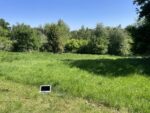
From the cavelike darkness of my university office, my day is textured by a slow livestream of weather from around the world. Yesterday we launched the Year of Weather Map - a collective map of weather created with satellite imagery contributions from DIY satellite ground station operators around the world. Around lunchtime a new series of images over Europe roll in, adding wispy cloud textures over the North Atlantic. Later in the afternoon, an incredibly clear image arrives spanning from the Great Lakes to Central America and featuring a brilliant sun-glint in the Gulf of Mexico. I await with some expectation an image from India but it does not appear in the Archive- suggesting a power cut, wifi failure or other infrastructure issue on the ground. Then on my train ride home it’s there in the archive and map - a ghostly nighttime image with a condensed mass of cotton-ball clouds to the South and the faint coastline of India and Pakistan. All of these weathers layer in slow, meditative fashion on the somewhat glitchy map we have created, the result of five years of network building, tool-making and the design, testing and crafting of small units of hardware.
2025-05-16 22:17:00
Cosmos Astronomy Club MIT WPU
Pune, India
India
NOAA-19

2025-05-16 11:42:31
Derrick Yohn
Transfer, Pennsylvania, United States
United States
NOAA-19

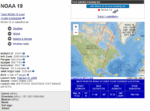
2025-05-16 11:43:00
Filip Shatlan and Diana Engelmann
Gainesville, Florida , United States
United States
NOAA-19
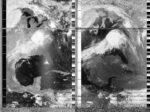
2025-05-16 13:10:08
Richard A Carter
University of York, Campus East, United Kingdom
United Kingdom
NOAA-18
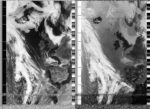
2025-05-16 11:28:52
Richard A Carter
University of York, Campus East, United Kingdom
United Kingdom
NOAA-19
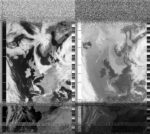
2025-05-16 11:32:00
Goownown Growers
The Seaweed Institute
CAST, Helston, Cornwall, United Kingdom
United Kingdom
NOAA-19

2025-05-16 11:51:00
Cyprus Amateur Radio Society
Nicosia , Cyprus
Cyprus
NOAA-18

2025-05-15 22:04:00
Zack Wettstein
Seattle, United States
United States
NOAA-19

2025-05-15 23:16:00
Heidi Neilson
Gilboa, New York, United States
United States
NOAA-18
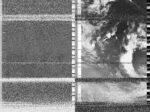
2025-05-15 22:32:00
Maufox
Mauritius, Mauritius
Mauritius
NOAA-19

2025-05-15 18:31:00
Michele Boulogne
Sodankyla Geophysical Observatory, Finland
Finland
NOAA-15
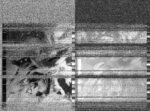

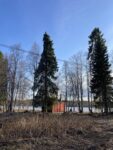
The weather is clear on Northern Finland this week, you can really feel the Spring starting strong finally. It felt extra special to catch a NOAA pass so close to the North pole.
2025-05-15 11:53:37
Derrick Yohn
Transfer, Pennsylvania, United States
United States
NOAA-19

From station N3TTI in Transfer, PA. Ground Station using RTL-SDR and SDR++. Current weather was overcast. Antenna is V-dipole tuned to 137MHz. The audio is captured to a WAV file and then run through the APT Image processor at open-weather.community for image processing. Future updates will be automatic signal captures and automatic uploading to the Public Archive. Thanks to open-weather.community for hosting such a fantastic project!
2025-05-15 08:34:00
Filip Shatlan and Diana Engelmann
Gainesville, Florida , United States
United States
NOAA-15
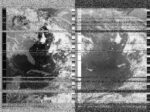
2025-05-15 08:30:00
Heidi Neilson
Gilboa, New York, United States
United States
NOAA-15
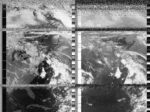
2025-05-15 11:48:00
Richard A Carter
University of York, Campus East, United Kingdom
United Kingdom
NOAA-18

A hurried, last minute sounding, and an odd sense of sadness, given the impending decommissioning of the analogue NOAA satellites. Cool and dry conditions, amidst what is likely to be the driest Spring on record in the UK.
2025-05-15 18:56:00
Oppressive Heat
Phnom Penh, Cambodia
Cambodia
NOAA-15

2025-05-15 11:45:00
Goownown Growers
The Seaweed Institute
CAST, Helston, Cornwall, United Kingdom
United Kingdom
NOAA-19
2025-05-15 11:41:00
Hospitalfield
Arbroath, Scotland
Scotland
NOAA-19
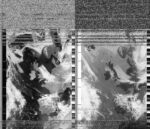
2025-05-15 12:04:00
Cyprus Amateur Radio Society
Nicosia , Cyprus
Cyprus
NOAA-18

2025-05-15 11:38:00
Maufox
Mauritius, Mauritius
Mauritius
NOAA-18

2025-05-15 09:28:00
Foto Colectania
Hangar
Ràdio Web MACBA
Barcelona, Spain
Spain
NOAA-15

2025-05-14 22:16:00
Zack Wettstein
Seattle, United States
United States
NOAA-19

2025-05-14 19:01:00
Zack Wettstein
Seattle, United States
United States
NOAA-15

2025-05-14 20:13:00
Filip Shatlan and Diana Engelmann
Gainesville, Florida , United States
United States
NOAA-15
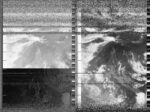
2025-05-15 06:14:00
Oppressive Heat
Phnom Penh, Cambodia
Cambodia
NOAA-15

2025-05-14 23:26:00
Goownown Growers
The Seaweed Institute
CAST, Helston, Cornwall, United Kingdom
United Kingdom
NOAA-18

2025-05-14 12:25:00
Zack Wettstein
Seattle, United States
United States
NOAA-18

2025-05-14 22:02:00
Cyprus Amateur Radio Society
Nicosia , Cyprus
Cyprus
NOAA-19

2025-05-14 09:17:00
Zack Wettstein
Seattle, United States
United States
NOAA-15

2025-05-14 12:02:00
Heidi Neilson
Gilboa, New York, United States
United States
NOAA-18
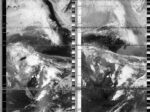
2025-05-14 22:27:00
Oppressive Heat
Phnom Penh, Cambodia
Cambodia
NOAA-18

2025-05-14 19:34:00
Cosmos Astronomy Club MIT WPU
Pune, India
India
NOAA-15
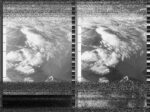
2025-05-14 11:58:41
Richard A Carter
University of York, Campus East, United Kingdom
United Kingdom
NOAA-19
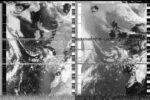

It is always pleasing to watch the signals of two NOAA satellites together, on the waterfall.
2025-05-14 11:54:00
Hospitalfield
Arbroath, Scotland
Scotland
NOAA-19
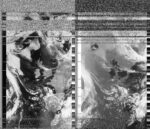
2025-05-13 22:29:00
Zack Wettstein
Seattle, United States
United States
NOAA-19

2025-05-13 23:38:00
Filip Shatlan and Diana Engelmann
Gainesville, Florida , United States
United States
NOAA-18
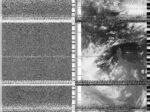
2025-05-13 19:27:00
Zack Wettstein
Seattle, United States
United States
NOAA-15

2025-05-13 22:03:00
Heidi Neilson
Gilboa, New York, United States
United States
NOAA-19
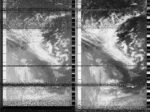
2025-05-13 20:23:00
Tsonami Arte Sonoro
Valparaiso, Chile
Chile
NOAA-15

2025-05-14 06:39:00
Oppressive Heat Project
Phnom Penh, Cambodia
Cambodia
NOAA-15

2025-05-13 22:57:00
Hangar, Ràdio Web MACBA, Foto Colectania
Barcelona, Spain
Spain
NOAA-19

2025-05-13 12:38:00
Zack Wettstein
Seattle, United States
United States
NOAA-18

2025-05-13 09:18:00
Goownown Growers
The Seaweed Institute
CAST, Helston, Cornwall, United Kingdom
United Kingdom
NOAA-15

2025-05-13 09:15:00
Hospitalfield
Arbroath, Scotland
Scotland
NOAA-15
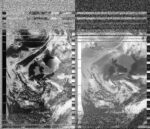
2025-05-13 10:51:00
Cyprus Amateur Radio Society
Nicosia , Cyprus
Cyprus
NOAA-19

2025-05-12 19:53:00
Zack Wettstein
Seattle, United States
United States
NOAA-15

2025-05-12 19:28:00
Heidi Neilson
Gilboa, New York, United States
United States
NOAA-15
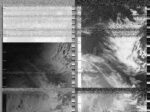
2025-05-12 22:13:00
Goownown Growers
The Seaweed Institute
CAST, Helston, Cornwall, United Kingdom
United Kingdom
NOAA-19

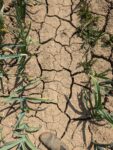
The soil at Goonown Growers is a clay loam so the limited rain over the past month has turned the top layer into a solid crust which cracks. This makes it hard to harvest crops like these leeks without damaging the base, but also cultivate the soil using the hand tools we rely on. We have reprioritised setting up irrigation systems as a result of this dry spring to ensure crop are well watered going into summer, reducing the likelihood of crops going to seed earlier or low yields due to plant stress.
Goonown Growers
2025-05-12 12:51:00
Zack Wettstein
Seattle, United States
United States
NOAA-18

2025-05-12 12:20:14
Sasha Engelmann
Between Queens and Schilling Buildings, Royal Holloway University of London, United Kingdom
United Kingdom
NOAA-18

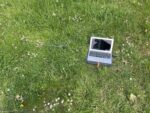
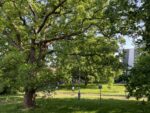
Another year, another Cosgrove Lecture at the Centre for GeoHumanities at Royal Holloway. Our speaker this year is Siobhan Angus who has written Camera Geologica, a book tracing the interrelations of geological materiality, social-environmental history and photographic image-making. I learn that in the 19th century, 20% of global silver went into photographic production processes. Gelatin, derived from animal bones, was so important for photographic practices that slaughterhouses were kept near Kodak and other major photo studios and facilities. Platinum printing processes were used to print and archive photographs of indigenous and global south communities, and the softer, ethereal aesthetics of platinum is therefore irrevocably linked to archives of communities at the threshold of ‘disappearance’. These are the traces of what Kathryn Yusoff calls ‘geological ghosts’ in historical visual cultures. Siobhan follows the work of Azoulay in stating that photography was not born in the 19th century, it was born in 1492 upon the threshold of the colonisation (and extraction from) the Americas.
2025-05-12 19:29:00
Hospitalfield
Arbroath, Scotland
Scotland
NOAA-15
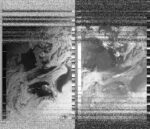
2025-05-12 11:12:00
Zack Wettstein
Seattle, United States
United States
NOAA-19
